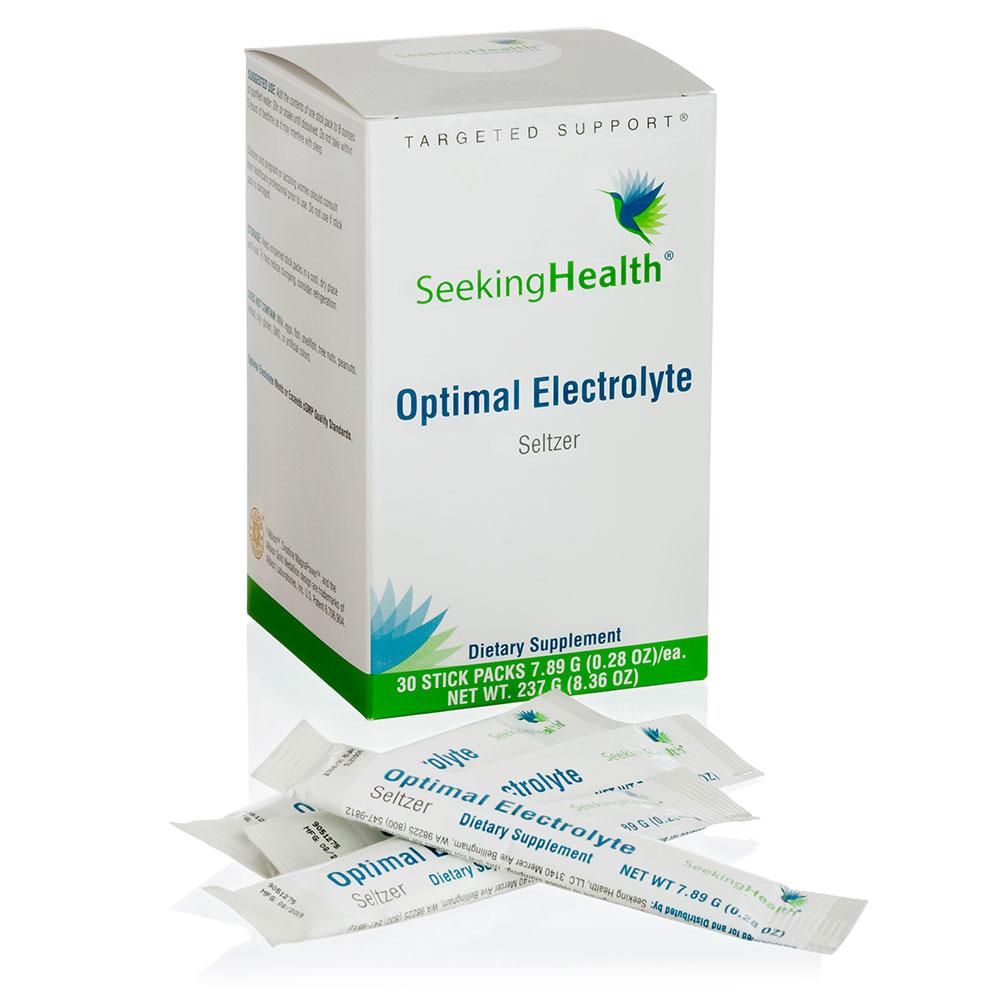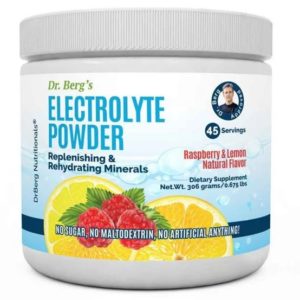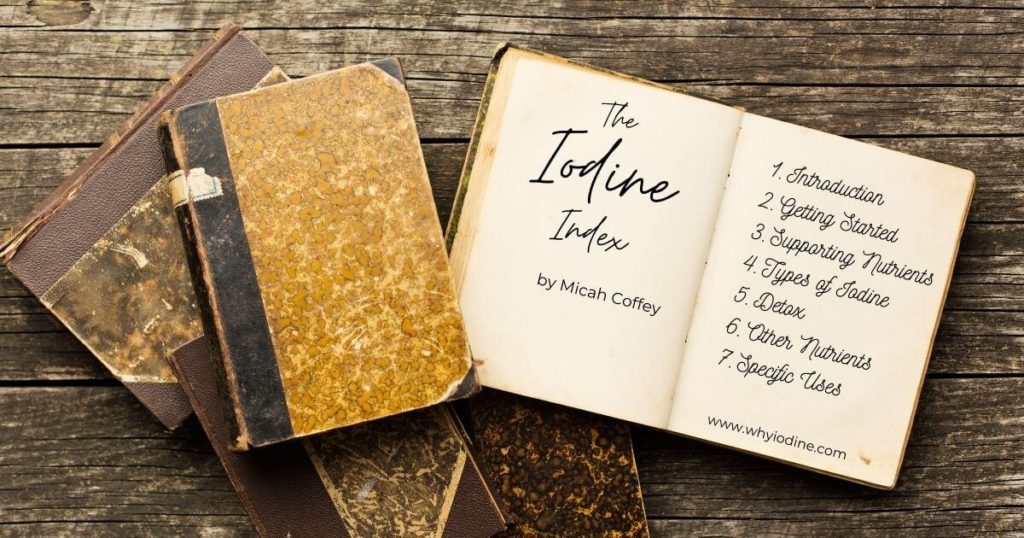Home - Articles - Other Nutrients - Electrolytes

Electrolytes are a group of nutrients that are important for several types of cellular function. There are a bunch of them, but the main four are Sodium, Potassium, Magnesium and Calcium. These four are what most people refer to when saying electrolytes.
Electrolytes carry electrical charges and play a key role in helping regulate nerve and muscle function and maintaining acid-base balance and water balance.
The deficiency symptoms for each electrolyte can be due to other electrolytes being out of balance. This is almost like how a dish can seem like it needs more salt when the issue is actually that it has too much pepper. Adding more salt may help for now, but it would be better to fix the pepper imbalance in the future so we don’t have to add even more salt to get the meal to taste.
Sodium
The electrical conductor. Sodium is one of finest conductors of electricity. The body is an electrochemical factory. Sodium represents one pole of the human “battery”. Sodium is outside of the cells while the other pole of the battery is potassium inside the cells.
Sodium and the adrenals. Sodium is regulated primarily by the adrenal glands. High sodium is associated with excessive adrenal activity. Low hair tissue sodium is associated with adrenal weakness, fatigue and burnout. 1
Sodium dissolves many compounds made of
- Calcium
- Magnesium
- Copper
- Iron
- Zinc and other minerals.
One cause of high blood pressure while consuming sodium is from too much sodium vs our level of potassium. Dr. Wilson says another cause is metals damaging the kidneys and arteries.
Our body can use sodium chloride of the salt to produce stomach acid and is alkaline forming.
The phrase “Worth your weight in salt” and term “Salary” are based on the importance of salt.
The Sodium-Glucose Pump uses sodium to allow glucose into our cells. When our glucose is elevated outside of our cells, we call this diabetes.
Read more about Unrefined Salt at whyiodine.com/salt
- Weakness
- Fatigue or low energy
- Headache
- Nausea
- Vomiting
- Loss of appetite
- Muscle cramps or spasms
- Confusion
- Irritability
- Restlessness
- Altered personality
- Lethargy
- Seizures
- Convulsions
- Decreased consciousness
- Hallucinations
- Coma
- Death
Potassium
Thyroid gland regulation. Potassium sensitizes the cells to thyroid hormone, according to Dr. Eck’s research. In addition, when sodium and potassium rise, tissue calcium tends to decrease. This causes the cells to become more permeable to thyroid hormone, in particular, and to other hormones such as insulin, as well. 2
Potassium is associated with
- Cell membrane stability
- Proper muscle contraction and relaxation
- Nerve conduction
- Co2 transport
- Sodium transport & balance
- Association with with cortisol levels
Potassium deficiency symptoms include
- Weakness and fatigue
- Muscle cramps and spasms
- Digestive issues
- Constipation
- Heart palpitations
- High blood pressure
- Muscle aches and stiffness
- Tingles and numbness
- Breathing difficulties
- Mood changes
- Polyuria(increased urination)
- Muscle paralysis
- Breathing issues
Magnesium
- One of the most important nutrients
- Present in every cell of the body
- Involved in over 600 enzymatic reactions3
- Deficiency contributes to dehydration issues
- Regulates brain activity
- Helps run the cycles that produce our energy
- Anti-inflammatory
Magnesium deficiency symptoms include
- Muscle twitches and cramps
- Mental health disorders
- Osteoporosis
- Muscle weakness & fatigue
- High blood pressure
- Asthma
- Irregular heartbeat
- Lightheadedness
- Shortness of breath
- Chest pain
- Fainting
Calcium
Calcium and Magnesium have a relationship with each other similar to Sodium and Potassium. They have a balance between themselves and in relation to Sodium and Potassium. And then all four of them work together to make things happen.
Calcium is used as a signaling agent for our cells. There is science to show Electromagnetic Field radiation causing disturbances to this system.
Calcium is complex because it’s involved in so many of our body’s systems. Researching the issues associated with D3 supplementation highlight how involved calcium is.
Boron and vitamin K2 are involved in helping calcium get where it needs to go instead of calcifying important tissue. Read more at whyiodine.com/boron and whyiodine.com/vitamin-k2
Calcium deficiency symptoms include
- Tingling of lips, tongue, fingers and feet
- Muscle & joint aches
- Spasms of throat with breathing issues
- Muscle stiffness and spams
- Seizures
- Abnormal heart rhythms
- Nail and skin issues
- Severe PMS
- Tooth decay and irritated gums
- Depression
Seeking Health
I prefer these over other electrolytes because of several extra nutrients
- PeakATP ® to supports exercise performance, recovery from fatigue and healthy blood flow
- Taurine to support magnesium absorption and healthy perspiration
- Niacin for circulation and metabolism
- Each serving is added to 8oz of water
Seeking Health recently reformulated these electrolyte. The new blend may not taste as amazing as the first formulation. So far it is working just as well for me.
Add NADH + CoQ10 additional ATP production support.
Dr. Berg's
I do not prefer the huge amount of potassium in this blend. I like to focus on potassium from food so I know I’m getting plenty of nutrients. Dr. Berg offers wheat grass powder for added nutrients. I prefer Seeking Health’s electrolytes for a better blend.. if they are in stock.
- 100% dissolvable and has an amazing raspberry lemon flavor
- No maltodextrin or sugar
- Contains 1000 mg of potassium per serving
- Each serving is added to 16oz of water
Micah thoughts
Sodium and potassium create an electrochemical gradient. This just means cells now have the ability to transfer nutrients that have the correct electrical charge. Without this gradient, our cells do not physically have the ability to transfer nutrients and other electrical charges from outside the cell to within the cell and vice versa. This gradient is almost like revolving doors of a building, without charging this system, the doors do not move and people cannot get in and out. Even if a business has high demand for its products, no sales can be made without customers getting in and out of the building.
In a perfect world, the sodium and potassium from our food would be enough to keep things in check, but due to our extreme imbalances by now, each system tends to require individual support before its able to function again. This means our electrolyte system may not work well enough unless we focus on it, but, once we do focus and do get it running again, it’s time to continue supporting other systems which depend on electrolytes. Otherwise we end up with a strong ability to transfer nutrients without any nutrients to move.
Sodium and potassium run these nutrient-revolving-doors, but they also create a solution that allow magnesium and calcium to function properly. Our cells use magnesium and calcium to communicate in an interesting way. Our cells import more or less of the a small piece of these nutrients called ions.
Here is an example of what magnesium ions are like. Lithium batteries are commonly used today because they are able to hold and utilize a lot of energy. But lithium ions are only half as potent as magnesium ions. Our body uses these ions in a different way but chemistry functions very similarly in different situations throughout our environment. “The magnesium ion has two valence electrons in the outer energy shell, compared to just one with the lithium-ion. Since these ions, lithium or magnesium, are effectively shuttling the electrons back and forth the magnesium would effectively allow twice as much energy to be carried during charge and discharge.” 4
If this is confusing, try to ignore the complexities and understand the importance and the overall goal. We are essentially a biological battery of many sorts, and these electrolytes allow us to generate and hold several important charges. This system needs support, but once its running, it’s time to use it.
A decent example would be trying to use our cell phone all day long and killing the battery so often that we need extra battery booster-chargers. But once we finally find all the boosters we need to run our phone all day long, we end up not using the phone, and all the extra batteries sit there at 100% charge. We wouldn’t continue to keep all the extra batteries charged if we don’t use them, just like we shouldn’t charge up our electrolytes if were not going to use the system and feed it nutrients.
If we do boot-up this system but don’t support the rest of the machine, we might expect things to behave oddly. The system closed everything down inadvertently as a method to protect itself. So although this electrolyte system is important to bring online, its going to cause other broken systems to start or resume blasting their alarm sirens.
What I’ve done is supported this system till I felt and understood the symptoms of high and low levels, and then went back to nutrition in general. Over time if I notice the symptoms of high or low electrolytes, I adjust what I’m consuming and how fast I’m trying to heal. It can get complex but I either feel slow when I’m low or jittery and overly energized when I’m getting too much of an electrolyte without enough of the others, or just too fast. My body is just one more advanced machine, it’s very possible to cause it to go too fast in a positive direction, which ends up being uncomfortable. There have been times I’ve benefited from eating crappy food or drinking something I know may slowdown my healing. If we were trying to balance a lawn mower engine and it started running too fast, one method of slowing it down would be to stick it in some tall grass so it bogs down. Looking at things this way helps me control the speed of my metabolism with my daily activities.
- https://drlwilson.com/ARTICLES/SODIUM.htm
- https://drlwilson.com/ARTICLES/POTASSIUM.htm
- Magnesium in man: implications for health and disease - https://pubmed.ncbi.nlm.nih.gov/25540137/
- Next generation and beyond lithium chemistries - https://www.sciencedirect.com/topics/chemistry/magnesium-ion
Continue reading…
I struggled with iodine and it’s detox for years. I have compiled this website in hopes that my journey might make yours a little easier.
Join us in the Iodine for Beginners group on Facebook
Help me help you
I’ve been compiling information about iodine since 2016.
Due to everyone being so different, and iodine being such an important part of healing, iodine requires a lot of content from a lot of different angles.
Help me reach more people by creating high quality content.
By using links to Amazon, Seeking Health, eBay, and others, funds may be generated that I can use to cover hosting and others expenses, and maybe take wifey out to dinner. Thanks in advance.
Take advantage of my coupon codes at SickofTired/save on your supplement orders.
The contents of this website, such as graphics, text, images, and other material contained on the website are for informational purposes only and do not constitute medical advice. This Site and the Content are provided on an “as is” basis.


